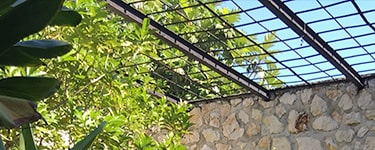Blog


With Appreciation for Nurse First Responders
It’s been 14 years since 9/11 yet for those of us who lived through it, it’s as clear as yesterday. For those on the front lines, it is a constant memory. Like other first responders who raced to help others without concern for their own safety, nurses were on the front lines.

As we remember all those who perished, those whose lived were forever changed by the loss of a loved one or friend, we also want to remember those who braved a horrific scene to offer help, including nurses. Registered nurses have consistently shown to be reliable responders, and their compassionate nature typically compels them to respond to those in need, even when it puts their own safety or well-being at risk.
From the yellow fever epidemic in 1878 to the San Francisco earthquake and fire of 1906; from the tragedy of 9/11 to the Haitian earthquake, nurses have been present and working hard to restore stability, though these are the stories the public seldom hears. Co- author Arlene W. Keeling (Nurses on the Front Line: When Disaster Strikes, 1878-2010), related in an interview that, “Nurses have been overlooked because they are doing their routine work. They’re always on the front line. They’re just invisible sometimes.”
Our nation’s 3.1 million nurses are on the front line in every phase of caring for victims of disaster. Providing nursing care at such a time is not easy. Nurses in the field may face uncontrolled physical environments, scarce human and material resources, and even personal risk. Many nurses who have provided disaster relief nursing care describe the experience as exhausting,draining, overwhelming but in the end, very rewarding. Others have said that they felt “proud to be a nurse‚” and felt good to be able to help their fellow man and woman in their time of need. They identified the ability to provide care, comfort, and pain relief as key components of their care. Still others have described the relief work experience as the “most significant contribution‚” that they have made in their nursing careers.
Disaster relief nursing is not for everyone. Not everyone is ready or capable of working in the potentially extreme conditions that the disasters frequently present. But if volunteering or working full time in disaster relief is a calling that tugs at your heart, there are dozens of avenues through which to make that calling a reality.
—National Disaster Medical System: The NDMS uses disaster management assistance teams (DMATs) made up of professional and paraprofessional medical personnel to provide medical care in the event of a disaster or other emergency.
—The Medical Reserve Corps: Major emergencies can overwhelm the capabilities of first responders, particularly during the first 12-72 hours. Medical volunteers provide important “surge” capacity during this critical period and augment medical staff shortages at local medical and emergency facilities.
—The American Red Cross: The American Red Cross responds to more than 70,000 emergencies every year, including fires, floods, hurricanes, earthquakes, mass transit accidents, hazardous spills, and explosions. Red Cross nurses were caring for victims of floods and epidemics in the 19th century, long before the establishment of the Red Cross Nursing Services in 1909.
—International Medical Corps: International Medical Corps (IMC) is a nonprofit, global humanitarian healthcare organization founded in 1984 that brings services, training, and programs to those most in need around the world.
On this day of remembrance, Frida and I want to remember all first responders, including nurses, who face enormous challenges in the face of disaster.
~Michael and Frida Donner
